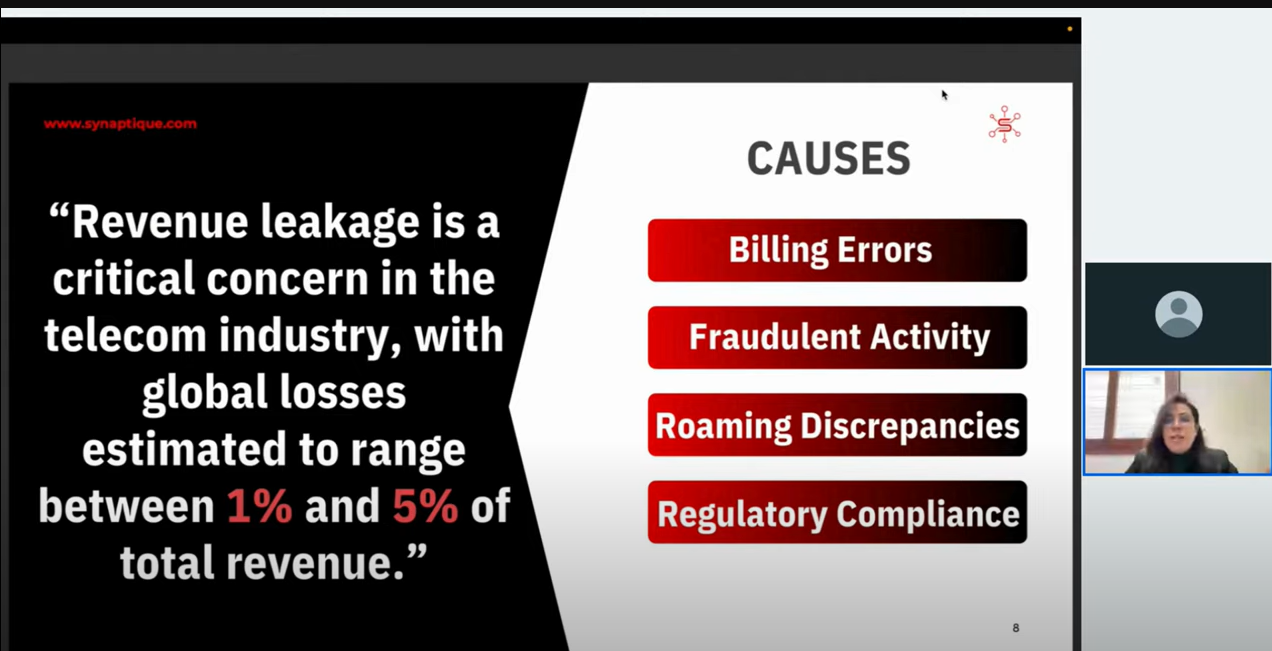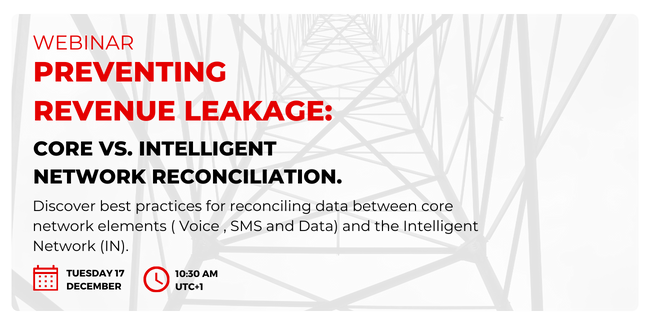Revenue Assurance (RA) and Fraud Management (FM) are critical functions for telecom operators aiming to protect their network, revenue streams and minimize financial losses. Ensuring these teams have access to the right data is essential for identifying discrepancies, addressing vulnerabilities, and implementing robust controls. Below is a detailed guide on the type of data to rovide to RAFM Teams to enhance revenue assurance and prevent revenue leakage effectively.
Type of Data to Provide to RAFM Teams by Telecom operators
1. Call Detail Records (CDRs)
Why They Are Essential: CDRs provide detailed information about every call made or received on the network, including time, duration, source, destination, and cost. RAFM teams use CDRs to identify discrepancies between billed and actual usage.
Key Attributes:
- Call start and end times
- Caller and recipient numbers
- Call type (e.g., local, international, roaming)
- Network element IDs (e.g., MSC,OCS)
- Applied rates and chargesUse Case: Reconciliation of CDRs against billing system data to detect under-billing or over-billing issues.
2. Data Usage Records
Why They Are Essential: Ensuring that all data usage is accurately captured and billed is crucial. Data usage records provide details on internet and app usage patterns by subscribers.
Key Attributes:
- Data session start and end times
- Volume of data transferred (upload/download)
- Session type (e.g., streaming, browsing)
- Associated costs and plans
Use Case: Reconciliation of data session records with charging systems to identify unbilled usage.
3. SMS Records
Why They Are Essential: SMS remain significant revenue sources, particularly in regions with lower internet penetration. RAFM teams need to ensure proper billing for all messaging services.
Key Attributes:
- Sender and recipient numbers
- Message type (e.g., domestic, international, bulk)
- Time of delivery
- Billing rates
Use Case: Cross-verification of SMS records with billing platforms to detect revenue leakage from promotional offers or network issues.
4. Subscriber Information and Profiles
Why They Are Essential: Accurate subscriber data ensures that customers are billed according to their subscribed plans, discounts, and usage patterns.
Key Attributes:
- Customer name and account details
- Subscription type (prepaid/postpaid)
- Plan details (e.g., data caps, call minutes, SMS bundles)
- KYC compliance data
Use Case: Reconciliation of subscription data with billing plans to detect discrepancies like incorrect plan activations or unregistered users.
5. Network Event Logs
Why They Are Essential: Network event logs provide insights into the functioning of core and intelligent network elements. These logs are crucial for identifying technical glitches that may lead to revenue leakage.
Key Attributes:
- Network element activity logs
- Error codes and failure records
- Timestamped records of events
Use Case: Identifying dropped calls or failed SMS deliveries that are not billed despite usage.
6. Billing System Data
Why They Are Essential: RAFM teams need access to billing system data to ensure alignment between what customers are charged and their actual usage.
Key Attributes:
- Billed amounts and invoices
- Applied discounts and promotions
- Payment records
Use Case: Auditing billing data against CDRs and subscription plans to ensure billing accuracy.
7. Mediation System Data
Why They Are Essential: The mediation system acts as the bridge between network-generated data and the billing system. Any discrepancies here can lead to revenue leakage.
Key Attributes:
- Raw data from network elements
- Processed data passed to billing systems
- Rejected or dropped records
Use Case: Reviewing mediation logs to identify lost data records that could impact billing.
8. Fraud Alerts and Patterns
Why They Are Essential: Fraudulent activities can lead to significant revenue losses. RAFM teams need detailed fraud data to identify and mitigate risks promptly.
Key Attributes:
- Detected fraud types (e.g.,Simbox bypass,CLI bypass fraud)
- Location and time of fraud occurrences
- Subscriber details involved in suspicious activities
Use Case: Cross-referencing fraud patterns with network and billing data to detect systemic vulnerabilities.
9. Interconnect and Roaming Data
Why They Are Essential: Revenue from interconnect and roaming services is susceptible to discrepancies due to differing billing systems between operators.
Key Attributes:
- Interconnect call/SMS records
- Roaming agreements and charges
- Reconciliation reports from partner operators
Use Case: Auditing interconnect and roaming data to ensure accurate settlements and prevent disputes.
10. Complaint and Dispute Records
Why They Are Essential: Customer complaints about billing inaccuracies can highlight gaps in the revenue assurance process.
Key Attributes:
- Complaint details
- Resolution steps and timelines
- Financial impact of resolved disputes
Use Case: Using complaint data to identify and address recurring issues in billing and revenue collection processes.
How Sharing the Right Data Ensures Effective Revenue Assurance
Sharing accurate and comprehensive data across departments is crucial for ensuring seamless revenue assurance processes. Here’s how it makes a difference:
Seamless Reconciliation of Records:
- Accurate data sharing ensures that network-generated data (e.g., CDRs, data usage records) aligns with billing and subscriber records.
- Helps RAFM teams identify and resolve discrepancies promptly, reducing delays in revenue collection.
Billing Accuracy and Transparency:
- Comprehensive datasets allow RAFM teams to cross-verify usage records against billing system data.
- Minimizes errors such as over-billing, under-billing, or unbilled usage, improving customer trust and satisfaction.
Enhanced Fraud Detection:
- Sharing data across teams allows for cross-referencing fraud alerts with network activity and billing logs.
- Enables faster identification of patterns, such as SIM fraud or unauthorized usage, and allows immediate mitigation.
Improved Decision-Making:
- Access to shared, accurate data provides RA/FM teams with actionable insights to support strategic decisions.
- Supports proactive measures by identifying trends and anomalies before they escalate into significant issues.
Streamlined Collaboration:
- Fosters collaboration between RAFM, IT, and network teams by providing a unified view of operations.
- Reduces silos and ensures all stakeholders are aligned in revenue assurance efforts.
To empower RAFM teams, our solutions S-ONE RA and S-ONE FRAUD provide comprehensive dashboards and analytics tailored to monitor, reconcile, and act on key operational data.
S-ONE RA delivers real-time revenue assurance analytics through customizable dashboards and automated reporting. With features such as detailed call detail records (CDRs) analysis, data usage monitoring, and billing system reconciliation, S-ONE RA enables teams to swiftly identify discrepancies and prevent revenue leakage.
S-ONE FRAUD focuses on fraud monitoring, offering robust analytics to detect and analyze irregular patterns in transaction data. By highlighting suspicious activities—such as potential Simbox fraud, Wangiri, CLI bypass, and other anomalies—S-ONE FRAUD equips RAFM teams with the insights needed to secure the network and protect revenue.
Together, these solutions streamline data sharing across departments and support proactive decision-making. They ensure RAFM teams have a unified view of critical data, enhancing collaboration and operational efficiency.
For more information, download our brochures:
Download S-ONE RA Brochure
Download S-ONE FRAUD Brochure
For a live demonstration of S-ONE RA’s capabilities, including its powerful dashboards, Book a Call today and see how we can transform your revenue assurance processes.
Conclusion
Providing RAFM teams with comprehensive and accurate data is the foundation for effective revenue assurance and fraud prevention. By ensuring access to CDRs, data usage records, subscriber profiles, and other key datasets, telecom operators can proactively identify and resolve revenue leakage issues. Moreover, fostering collaboration between network, IT, and RAFM teams can further strengthen controls and enhance financial performance.
To succeed in this mission, operators must also invest in advanced analytics tools and automated reconciliation systems to process and analyze data efficiently. Revenue assurance is not just about preventing losses but also about building a robust framework that ensures long-term profitability and customer trust.

